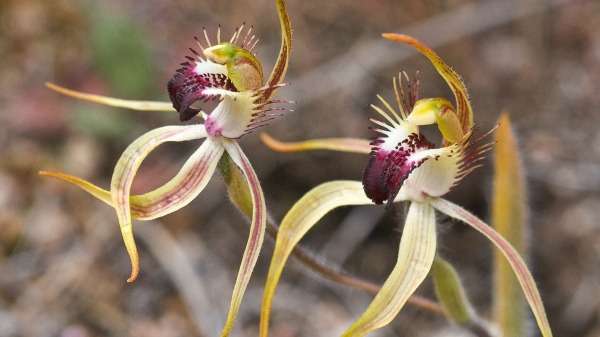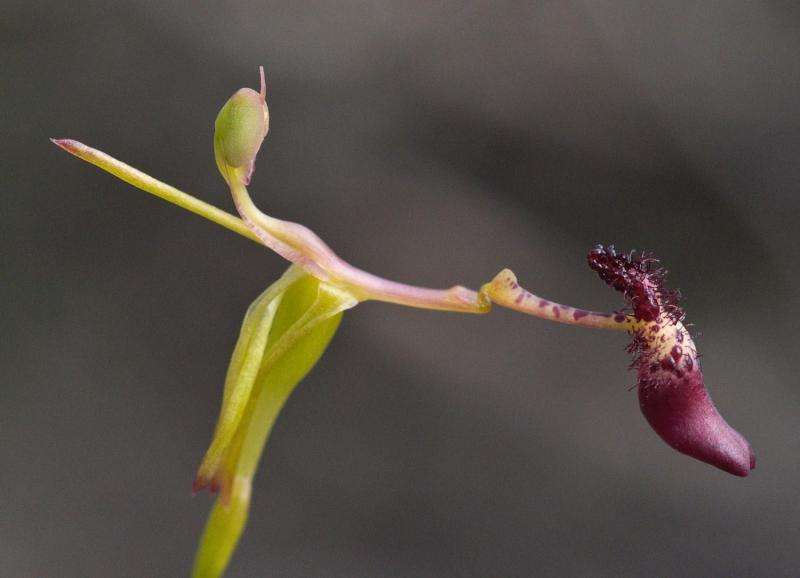Threatened orchid locations top secret for survival

The future of four stunning but highly threatened orchid species in WA's wheatbelt region is now more secure thanks to a special collaboration between community volunteers and a dedicated scientist.
The four-year project mapped the specific habitats of the ballerina orchid (Caladenia melanema,) the granite spider orchid (C. graniticola,) William's spider orchid (C. williamsiae) and the lonely hammer orchid (Drakaea isolata) through countless hours of volunteer time in the eastern Wheatbelt.
Permanent plots were then established for each orchid, to collect valuable information on the health of these endangered populations.
The data collected has enabled UWA ecologist and project manager Dr Mark Brundrett to measure possible threats to the plants, such as a habitat decline and rising salinity levels, as well as seed production, dormancy periods and the impacts of animal grazing.
"At the time we collected the data, the populations, while small, appeared to be stable, but it is also worth noting that we didn't see many emerging seedlings, which is obviously a concern," he says.
Findings from the surveys suggest the orchids remain highly threatened and management strategies needed to be implemented locally to ensure their survival, he says.

"Now that we have specific maps of where these orchid populations are most concentrated we can manage their survival in a more strategic way," he says.
The orchid's secret hideaway
The mapping found that each species was confined to an area between two and ten hectares.
However, while the orchids can be found in the general regions of Hyden, Brookton and Lake Grace, don't expect the specific locations to be revealed any time soon.
Dr Brundrett says revealing the secret locations of these endangered plants could threaten their long-term survival.
"Orchids are charismatic organisms, and people like to find them and photograph them, but if the habitats become too popular with tourists we'd be concerned about them being trampled," he says.
The study involved volunteers from the Friends of Kings Parks, the Australian Native Orchid Study and Conservation Group, and staff from the Department of Parks and Wildlife and the University of Western Australia.
"On some of our mapping and data collection trips we had up to 30 volunteers working with us," he says.
Provided by Science Network WA
This article first appeared on ScienceNetwork Western Australia a science news website based at Scitech.



















